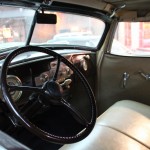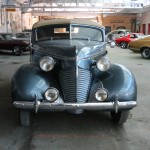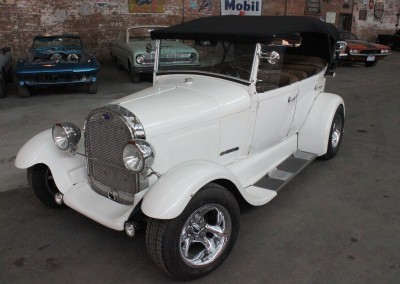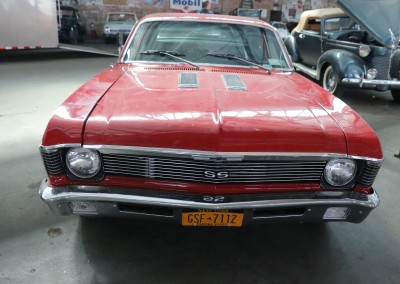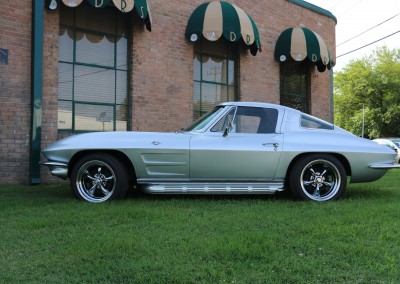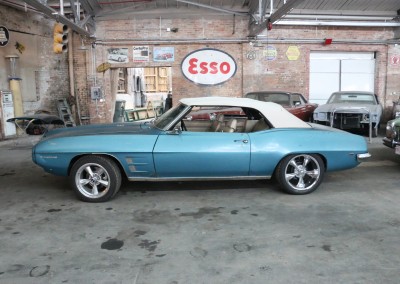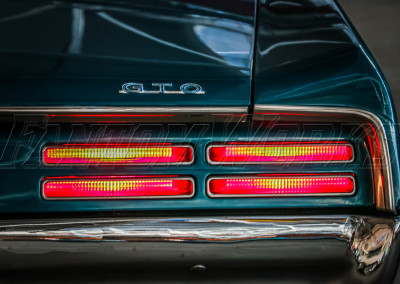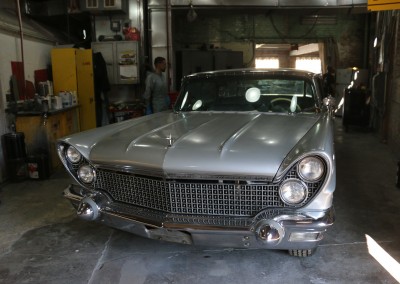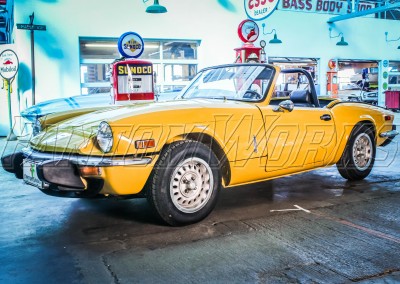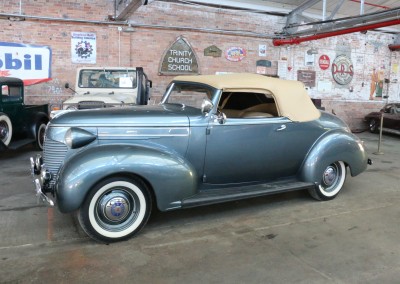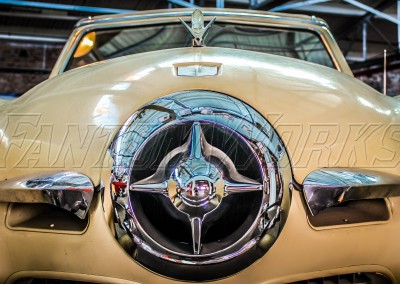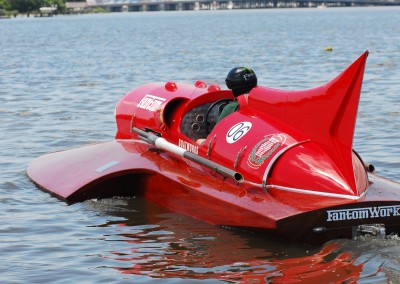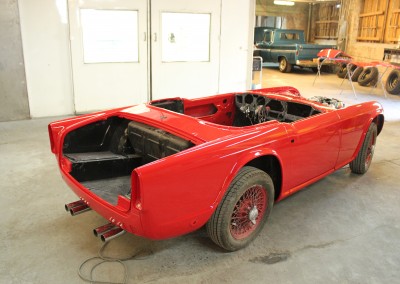1939 Hudson Hawk 112

As seen on Season One of FantomWorks
Owner Insight:
This car is a special car and the only survivor of only three built in 1939. In 1938, due to the lingering effects of the great recession, Hudson came up with the 112 line. It was a low cost line of cars at the bottom of the Hudson cost scale. More were built in 1938, including the convertible 112 was used as the pace car at Indianapolis. In 1939, although this car showed up in the sales brochure, no 112 Convertibles were built until a man went into a Henaly Kimball dealership in Boston and requested one. As they were a large distributor for Hudson when this car was requested, someone went in the back and found three left over body shells from the 1938 run. So, three cars were built – one went to Boston, one was kept by the Hudson Sales Manager in Detroit, and one went to Colorado. The one in Detroit was eventually totaled in an accident. The one in Colorado was seen in a junk yard in the 1960’s by a Hudson club member at the junkyard for something else. Later, when he went back to inquire about the convertible, he was told it had been scrapped.
This car was bought to be used by the purchaser’s oldest son. He went off to college and then into the service during WWII, where he was killed. The car was then used by a younger son. He went off to the Korean War and was killed. The father then had the car and refused to sell it. It stayed in his garage until the 1970’s when he passed away. His daughter then sold it to a member of the HET Club. He did an amateur restoration on the car and drove it to car shows from then into the 1990’s when he got too old to participate in the old car hobby. He sold the 1939 112 to my father in 1994. My father and mother loved the car and took it to car shows in the St. Louis metro area where they lived. At Christmas, if the weather was good, he would park it in the driveway. He would put the top down and put a stuffed Santa in it to wave at the people as they drove around looking at Christmas lights.
By 2003, my father was getting too old to participate in car shows, so he sold the 112 to me. Susie and I drove it to car shows, local cruise-ins and just down to the ice cream shop for a number of years. It got to the point where the engine was not reliable and quit on me a couple of times as I took it out to go to car shows. I had a guy who was going to work on it, but he got busy, so it got put off for a year. Then, the next year he couldn’t do it again, so I was looking for someone else. But then, there was upheaval at work and I found myself out on the street working as an independent contractor. This worked well, but took all of my time, so 5 years went by with me being very busy with no time for my Hudson.
Finally, I had time again and was looking for somewhere to take the ’39 for a complete restoration. Having seen the FantomWorks show, I contacted Dan as one of the places I was going to consider for restoration. I knew from the show the attention to detail and getting it right at FantomWorks. Dan and I quickly hit it off and so I had the car brought to FantomWorks. As there aren’t a lot of Hudsons around and even fewer 112’s, I’ve tried to work with Dan to find parts and supplies where needed. I’m very happy with the process at FantomWorks and will recommend them to my friends in the old car community.
–Mike S.
Explore the Project Galleries
Arrival
Disassembly
Strip & Metal Fab
Mechanical
Body & Paint
Detail & Trim
Finish
Hudson Motor Car company was founded by auto pioneers Howard Coffin, George W. Dunham, and Roy E. Chapin, and largely funded by department store owner Joseph L. Hudson. In 1910, just one year after it was created, Hudson was the eleventh-largest auto company in America — a country then rife with automakers.
Hudsons were advanced for the times. Even their early cars were mainly closed models, sealing out the weather, which helped popularity. Hudson quickly put the steering wheel on the left and hand levers in the center, their modern positions, and adopted GM’s self-starter earlier than most makers, making cars easier and safer to start.
Hudson’s peak was in 1929, when the company produced no less than 300,000 Hudson and Essex cars worldwide. But, despite the popular, inexpensive Essex and Essex-Terraplane (1932-38), the Great Depression mortally wounded Hudson.
In 1938, though, the line was renamed to Hudson 112; and Hudson began building cars in Canada through a contract with Canada Top and Body in Tilbury, Ontario.
In 1938, production numbers dropped from 111,342 (in 1937) to just 51,078. More than half of the production in 1938 was the 112, which had a 175-cubic-inch L-head six that was destroked from 5 inches to 4.5 inches. The 112 had a suspension like the larger Hudsons, a forward-hinged “alligator” hood, and a wheelbase 5 inches shorter than the Terraplane. However, the two-year offering wasn’t completely new – it used Terraplane body parts whenever possible. And despite the cost-cutting efforts Hudson made with the 112, it still cost $25-45 more than its Chevrolet, Ford, and Plymouth competitors.
Read more about Hudsons at: http://www.allpar.com/cars/adopted/hudson-1936.html

